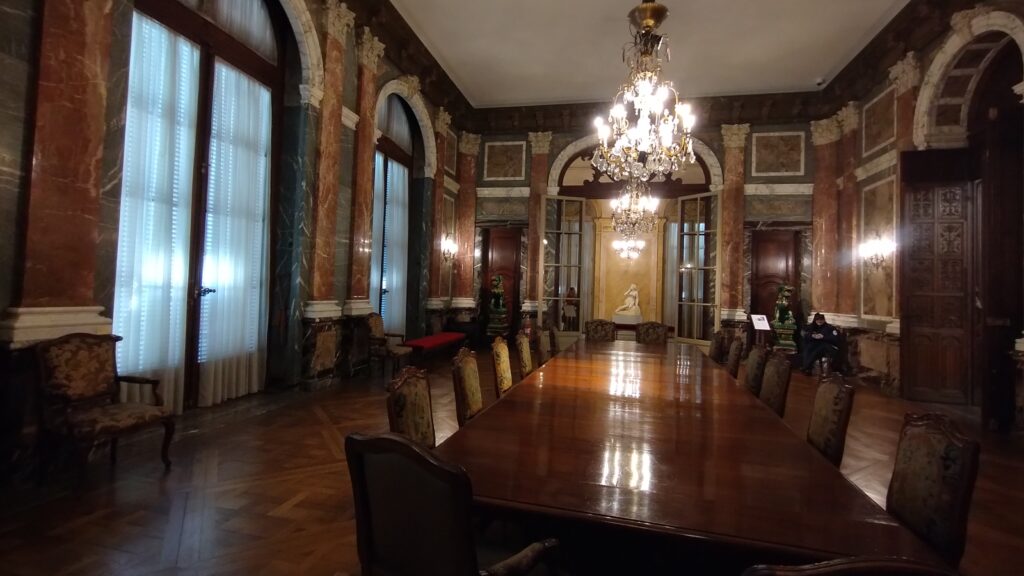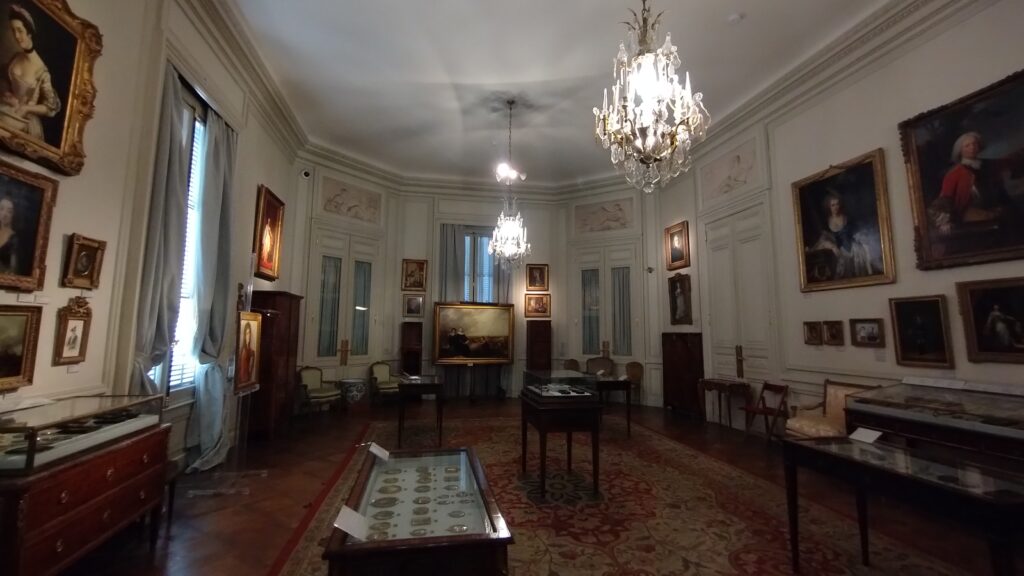The National Museum of Decorative Art in Buenos Aires is a must-see for lovers of decoration, art and culture. It is located in the old Errázuriz Alvear Palace, one of the most elegant residences in the City of Buenos Aires, and permanent and temporary exhibitions are exhibited there.
Collections of sculptures, weapons, books, furniture and art on display dating from the 16th to the 20th centuries invite you to enjoy a unique synthesis between art and decoration. In addition, you will be able to appreciate the beauty of the architecture of that palace, which is very well maintained, both in its interior and also in its exterior patio.
National Museum of Decorative Arts (Buenos Aires): Everything You Need to Know Before Your Visit
What is the National Museum of Decorative Art?
The National Museum of Decorative Arts is a living testament to the Belle Époque of Buenos Aires in the early 20th century, a period characterized by European influence and luxury that led to the construction of majestic properties for the wealthiest families.
Collections
The museum, located in the former Palacio Errázuriz Alvear, features valuable collections of sculptures, paintings, tapestries, weapons, books, ceramics, furniture, and miniatures, primarily European and Oriental, from the 16th to the 20th century. The collection includes:
- Roman sculptures
- Contemporary silverwork
- French furniture
- Swedish glass
- Miniatures from the 16th to the 20th century
Notable pieces include:
- European miniatures from the 16th to the 20th century displayed in the Family Room
- “Jesus with the Cross” by El Greco
- 16th-century tapestries in the Grand Hall
- Sculptures by French artist Auguste Rodin
- A bronze clock gifted to King Louis XVI and Marie Antoinette as a wedding present
Temporary Exhibitions and Activities
The museum also hosts temporary exhibitions of public and private collections, as well as works by contemporary artists and designers.
Through permanent exhibitions, temporary displays, guided tours, and cultural activities, the museum fosters a stimulating dialogue between past artistic testimonies and present creations.
Historical Significance
The museum’s collection began with the heritage amassed by the Errázuriz Alvear family, who sold the house and some of their art collections to the National State in 1936. Since its opening in 1937, the museum’s heritage has grown significantly thanks to donations and bequests from major collectors worldwide.
Architecture and Restoration
The museum is housed in the Palacio Errázuriz Alvear, designed in 1911 by architect René Sergent in a French neoclassical style. The building was the residence of Josefina de Alvear and Matías Errázuriz Ortúzar.
The palace was restored as a house-museum, not only showcasing valuable pieces of art and furniture from various periods but also revealing the lifestyle of a bourgeois family in the early 20th century.
Technological Advancements
The architect incorporated numerous technological advancements of the time to make the house more comfortable, such as two elevators, a central heating system, and a central vacuum system.
The palace’s main floor was used for social events, the first floor housed the family’s apartments, the second floor was for service, and the basement, now used for temporary exhibitions.
Visiting Information
The National Museum of Decorative Arts is open from Wednesday to Sunday, from 1 PM to 7 PM, with the last admission at 6:30 PM. Admission is free, and no prior reservation is required.
Guided tours for the general public are available on Wednesdays, Thursdays, Fridays, and Saturdays at 4 PM. Monthly thematic guided tours are also offered (check the museum’s calendar for details). Special group tours require a prior reservation.

Where is the National Museum of Decorative Art located?
The National Museum of Decorative Arts is located on Avenida del Libertador, opposite Plaza República de Chile and Parque República Oriental del Uruguay, in the Recoleta neighborhood of Buenos Aires.
Recoleta is known for its green spaces and is highly appreciated by tourists. Nearby avenues include Las Heras, Coronel Díaz, and Figueroa Alcorta. The neighboring Palermo district is also one of the most visited and popular areas for both foreigners and locals.
How to get to the National Museum of Decorative Art?
By Subway
The subway is an accessible option to reach the museum, although not the most direct. You can take Line H, with stations at Facultad de Derecho and at the intersection of Las Heras and Pueyrredón, or Line D, with stations on Avenida Santa Fe. From these stops, you will need to walk a few blocks to the museum.
By Bus
Several bus lines pass through the area, including lines 10, 37, 38, 41, 59, 60, 67, 92, 93, 95, 102, 110, 118, and 130.
By Bicycle or Car
On weekends, the area is ideal for cycling or driving, although finding parking can be challenging. Alternatively, you can take a taxi or an Uber.
Admission
Access to the museum is free, and you can visit both the temporary exhibitions and the permanent collection, which includes two floors and several rooms.

Why visit the National Museum of Decorative Art?
Historical Architecture
The historical architecture of Buenos Aires was heavily influenced by European colonial and classical styles. Visiting the museum allows you to appreciate the interior architecture of one of the city’s most elegant residences, as well as its impressive facade and exterior patio with grand columns and a rear pool.
Art and Sculpture Collections
The main attraction of the museum is its permanent collection of art, sculptures, and decorative pieces. The collection features over 6000 items, including paintings, sculptures, furniture, books, ceramics, and tapestries from both Europe and the Orient. The beauty and originality of these collections enrich the national heritage.
Guided Tours
A guided tour is the best way to fully appreciate the museum. Guides provide essential context and explanations that enhance your understanding of the exhibits.
Temporary Exhibitions
In addition to the permanent collection, the museum hosts temporary artistic and cultural exhibitions. These exhibitions are separate from the permanent collection and offer a dynamic and varied experience for visitors.
Enjoy a Meal at the Museum’s Café
At the entrance to the museum, you’ll find Croque Madame, one of the most elegant restaurants and cafés in Buenos Aires. You can enjoy a coffee, breakfast, or meal in its stylish interior or at the tables located at the museum’s entrance.
Explore the Exterior Patio
To the right of the museum entrance, a stone path leads to a beautiful patio at the rear of the palace. This area combines green space with the building’s columns and stairs, and includes a well-maintained pool. It is an ideal spot for taking memorable photographs, especially when bathed in sunlight.


